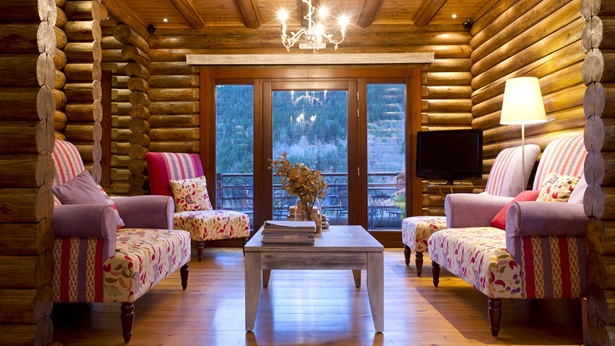How to Locate Land
If you have decided to make your log and timber home dream a reality, the good news is that you will likely be paying far less for land than you would have just a few years ago. Before the housing boom went bust, land costs were as much as 80% of the total cost of a new home in some markets in the United States. Now, depending on the region, that percentage has fallen into the single digits
Most people know that land costs have dropped. But the numbers developed by the Lincolin Institute of Land Policy show just how far and how fast. The Institute and the Graaskamp Center for Real Estate at the Wisconsin School of Business created the free state-by-state database.
Land costs have fallen in places like Atlanta and Cleveland, OH, by as much 30% to 40%, respectively, reports BuilderOnline, which analyzed the Institute’s data. Scores of metro and rural markets have experienced the same drop.
Have we hit bottom? We’ll leave that prediction to other pundits. But some builders and developers are returning to the market and snapping up prime parcels.
Can you get a good deal on land? Use this portion of The Perfect Path to Your Dream Home by the Log and Timber Homes Council, to help you make savvy land buying decisions.
Start Shopping Online
Begin your search online. There are scores of websites devoted to land purchases, including Land and Farm, Land Watch, and the U.S. Department of Agriculture’s resale website.
Quality of Life
Getting a good deal on the price is great. But one has to weigh other factors. Do you like the view? How far away is the supermarket, fire or police protection and other necessities? Will weather affect access?
Zoning and Density
Start by visiting the local building department, either on the city or county level. Research the zoning and density requirements that surround your potential building site. Understand how your building site will be impacted by nearby development, as well as in the community as a whole.
Past, Present and Future Use
What can seem permanent, may not be. A thick forest of Pondersosa pine, for example, can seem as permanent as the mountain itself. But beetle infestation has recently killed whole mountain ranges of forests across the Rocky Moutain states, turning evergreens into forever-browns. Wild fires can also consume large swaths of forests. Does your site have a past? Mining operations in a few areas of the country have polluted water tables.
Utilities
Will you be on a well and septic system or will your building site have access to public water, sewer and electrical or will you have to build “off the grid?” The cost of these has to be factored into your budget. Density can affect the price of this as well as the quality of service.
Terrain, Soil and “Perc Test”
How deep is the top soil? If your site is on the side of a moutain, the views can be dramatic. But if it only has a thin coating of top soil, contractors will have to blast bedrock to excavate. This will quickly increase foundation construction costs. Also, if you are installing a septic system you will have to discover if the site will pass a “perc” or percolation test.
Is Growth Managed?
Has the state you want to live in passed any kind of growth management act? A few states have. Typically these plans delineate where growth will be channeled over the next 25 to 50 years, including community density, building plans, transportation growth and more. If there isn’t a statewide law on growth, the local city or county council could determine where growth will be allowed. Either way, you must make some judgment on whether you trust a community’s intentions with the property you will spending your money on.
Federal and State Lands
If you’re shopping for pristine land, look for areas that fall under federally protected land and wildlife rules. Even if land is privately owned, it will be subject to certain restrictions to protect endangered species. Critical habitats, including migration routes for eagles, spotted owls or bats, are typically exempt from large-scale developments, large power lines or highways.
Transportation and Traffic
Analyze the access to your building site (is there more than one road in?) as well as to the community as a whole. Ideally, you’d want well-maintained roads and highways with a regional airport within an hour or two drive. But you don’t want so much traffic congestion that it impacts pollution levels and noise.
Local Economy and Taxes
The health of the local economy will impact your land decision. Grinding poverty can have just as dramatic impact on the landscape as an influx of billionaires. Which way is your community headed? Research the current tax rate. A community needs some taxes to support infrastructure needs, such as police, fire protection and water and sewer. However, tax rates in some resort areas have been known to dramatically increase, which can be a serious threat if you are on a fixed income in your retirement years.
Medical Care
Ever sit around with friends and family and compare physical infirmities? This game of geezer poker is a precursor to all of us facing declining health in our latter years. So consider how far away is medical care, the size of the facility and the experience of its practitioners, before deciding on a parcel.
Community Covenants
Convenant-controlled communities limits what you can do with your own property. This seems intrusive at first glance. But it’s the only way for developers to tread lightly on the land and preserve their clients investments in the process. If there are no land use rules, your neighbors may invite every cousin to park an RV in their front yard — forever. Neighbors can be more than an annoyance; they can detract from the value of your investment.
Contingency Agreements
After finding a lot you are seriously considering purchasing, work out a contingency agreement with the seller. These agreements indicate to the seller that you are serious enough to put a deposit down (usually nonrefundable) while giving you enough time to determine if the property is a buildable lot. These contracts usually run from 30 to 90 days. If the seller does not agree to grant such a contingency, then there may be something wrong with the property that he or she is reluctant to share.



